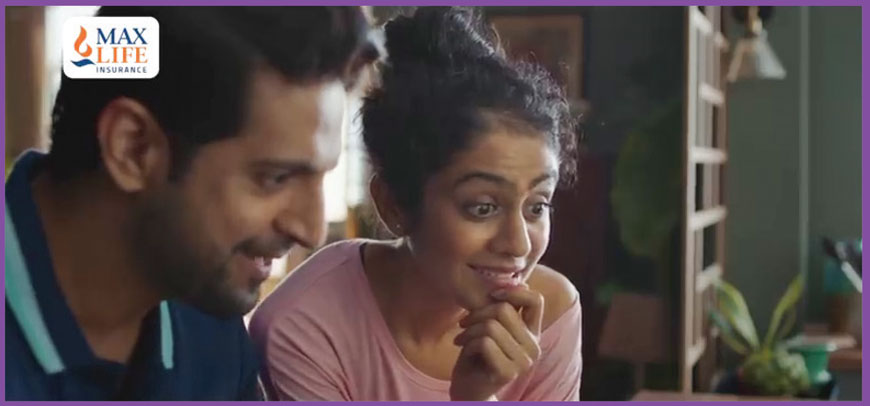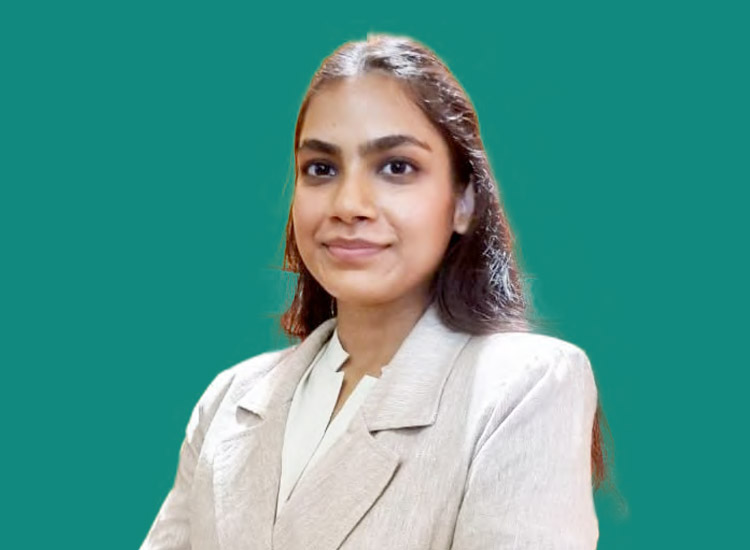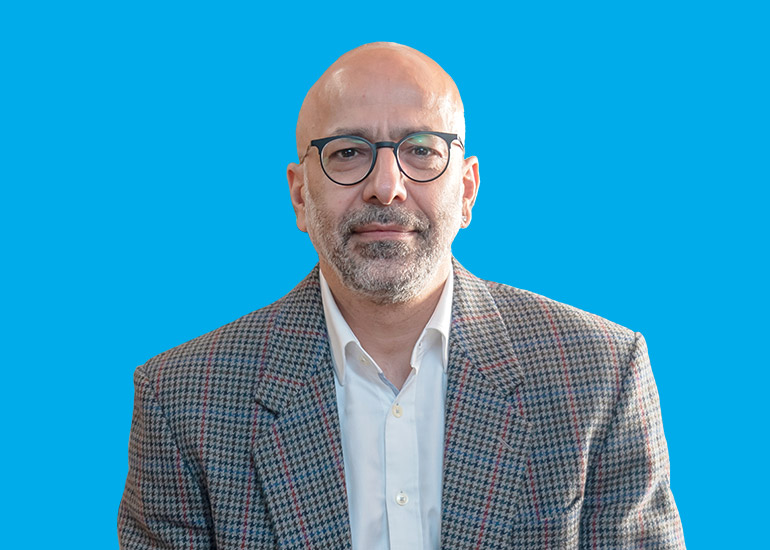Q] How does the concept ‘You are the difference’ help brand Max Life Insurance? What has been the insight and thought process behind it?
One of our core principles for our campaigns it to focus on acute insights of our consumers. That is why our campaigns generally take longer than usual. Even with this campaign, the insight that we have worked on, to come to the tagline ‘You Are the Difference’ is completely customer-focused. The cultural insight that we deliberated through various research and conversations among ourselves and along with our creative agency, Ogilvy, is around the fact that in India, we are culturally more conservative about our potential and our own individual ability. That is what we wanted to differentiate here. We want to celebrate the individual, who is our customer, and largely the bread-winner to see their real value and cherish that, rather than the dogma of carrying the burden of the family. As a life insurance company, we must talk about life instead of the traditional way of talking about death. So, that is the impetus of the campaign which talks about how important you are to your loved ones and give yourself that value so that in future you will be able to take care of their aspirations if you are there, and even if you are not there. So, ‘You Are the Difference’ is about focusing on the ‘you’, the customer.
Q] Apart from the TVC, how are you communicating the concept and tool of real value to your target audience?
Our focus is on both, external audience and our own customers, to make them participate in this real value tool. So, apart from the 360-degree campaign which includes ATL, BTL and largely Digital, our customers will be met through our distributors. We participate with Axis Bank and Yes Bank who will be using our tools in their conversations with their customers. We intend to cover close to 5-6 million customers in the next couple of months. Our customer segments are largely millennials, and also the over-35 age bracket with income category of Rs 7-10 lakh plus. So, that’s how we plan to spread the message.
Q] What would be the proportion of your ATL, Digital and BTL spends?
This is an evolving business and I don’t want to put numbers to our advertising spends. It will depend on how the audience responds and reacts. We are coming into campaigns after a kind of hiatus. But yes, if I look at proportion of business, domination will be through Digital, which is close to about 50% of our entire spends. TVCs will be on the offline model, which will be largely on TV and Print. So the rest 50% would be 75%-25% in that proportion. But, it is evolving, and we will see how our clients respond and how we are getting our ratings on this whole thing.
Q] How effective are ATL campaigns for insurance as well as banking business in terms of getting the numbers, for example a bank account in case of banks, because eventually this is a business which is more distribution-led?
Yes, this is largely a distribution-led business. Having said that, there is always a support that campaigns provide to even distributors and for us in the marketing side to create conversations to initiate discussions with potential customers. To that extent, ATL/ BTL creates that pull that helps us create higher conversations. And our business is very clearly linked to top of the funnel going down to bottom of the funnel, which is conversion. So, to make efficiency more relevant, we need to push top of the funnel, and that’s where ATL, BTL activities work.

Q] Your earlier campaign during the IPL also had the baseline, ‘You Are the Difference’…
Yes. We had actually seeded this thought much earlier and we wanted to start bringing it out to the media, but more as a tagline than as a concept. It is now that we are bringing the concept in, and therefore there is a clear link to our previous ad campaigns as well. They were more tactical in nature at that point in time. And now the entire cycle gets completed as we bring in this campaign.
Q] Generally, insurance and mutual fund campaigns are released in the last quarter of the financial year so that people invest before the financial year ending. And you had also done an IPL campaign recently. Considering this, what was your thought behind releasing the campaign right now as against the last quarter of the financial year?
If your focus is just creating sales then yes, January, February and March (JFM) is a great quarter. Having said that, this particular campaign is about seeding a thought; it’s seeding a concept. To do that, you need to have a longer gestation period for the thought to get engrained in the consumer’s mind. To do this in JFM quarter alone was certainly a question we asked ourselves. But we also realized that there is more of a clutter in that quarter and for a brand to stand out, it may need to spend more money in the concentrated period. So, we have used an earlier point which is the festival time. In this festival time, we want consumers to celebrate the ‘you’.
Q] What is your view of the overall market right now? How has FinTech changed the dynamics of the industry?
The reality is that life has changed. Consumers are responding to stimuli in a very different manner. They want instant gratification and because of their experience on FinTech or on digitization. Information is available at the click of a button, and hence they want transparency and speed. So, when we focus on our client segments, we understand that they participate extensively in the digital space for conversations and taking decisions. We at Max Life believe that as a brand, we need to stop talking to the customers and start talking with the customers. Therefore, our brand strategy is focused on talking with the customer on items that solve his pain points instead of solving my pain points and making things more efficient and transparent.
Q] What is your view of the current economic slowdown and how will this impact the insurance industry?
The insurance sector has been performing extremely robustly in the past couple of quarters. We anticipate that this will continue for some more time, at least. Max Life per se has been growing very well by 25%-30% over the last year. We are seeing a lot of growth coming in from the protection-based business. There is a huge protection gap that India suffers from and that will continuously help the insurance business to keep growing at good growth rates.
The Insurance Regulatory and Development Authority (IRDA) is doing very well to increase awareness about insurance in the minds of the consumer. That is making insurance much more relevant for him irrespective of the economic slowdown. If we keep focusing on growing awareness, I don’t see reversal of the growth trend as we speak today. We don’t see an immediate hit in the next couple of quarters.
One of our core principles for our campaigns it to focus on acute insights of our consumers. That is why our campaigns generally take longer than usual. Even with this campaign, the insight that we have worked on, to come to the tagline ‘You Are the Difference’ is completely customer-focused. The cultural insight that we deliberated through various research and conversations among ourselves and along with our creative agency, Ogilvy, is around the fact that in India, we are culturally more conservative about our potential and our own individual ability. That is what we wanted to differentiate here. We want to celebrate the individual, who is our customer, and largely the bread-winner to see their real value and cherish that, rather than the dogma of carrying the burden of the family. As a life insurance company, we must talk about life instead of the traditional way of talking about death. So, that is the impetus of the campaign which talks about how important you are to your loved ones and give yourself that value so that in future you will be able to take care of their aspirations if you are there, and even if you are not there. So, ‘You Are the Difference’ is about focusing on the ‘you’, the customer.
Q] Apart from the TVC, how are you communicating the concept and tool of real value to your target audience?
Our focus is on both, external audience and our own customers, to make them participate in this real value tool. So, apart from the 360-degree campaign which includes ATL, BTL and largely Digital, our customers will be met through our distributors. We participate with Axis Bank and Yes Bank who will be using our tools in their conversations with their customers. We intend to cover close to 5-6 million customers in the next couple of months. Our customer segments are largely millennials, and also the over-35 age bracket with income category of Rs 7-10 lakh plus. So, that’s how we plan to spread the message.
Q] What would be the proportion of your ATL, Digital and BTL spends?
This is an evolving business and I don’t want to put numbers to our advertising spends. It will depend on how the audience responds and reacts. We are coming into campaigns after a kind of hiatus. But yes, if I look at proportion of business, domination will be through Digital, which is close to about 50% of our entire spends. TVCs will be on the offline model, which will be largely on TV and Print. So the rest 50% would be 75%-25% in that proportion. But, it is evolving, and we will see how our clients respond and how we are getting our ratings on this whole thing.
Q] How effective are ATL campaigns for insurance as well as banking business in terms of getting the numbers, for example a bank account in case of banks, because eventually this is a business which is more distribution-led?
Yes, this is largely a distribution-led business. Having said that, there is always a support that campaigns provide to even distributors and for us in the marketing side to create conversations to initiate discussions with potential customers. To that extent, ATL/ BTL creates that pull that helps us create higher conversations. And our business is very clearly linked to top of the funnel going down to bottom of the funnel, which is conversion. So, to make efficiency more relevant, we need to push top of the funnel, and that’s where ATL, BTL activities work.

Q] Your earlier campaign during the IPL also had the baseline, ‘You Are the Difference’…
Yes. We had actually seeded this thought much earlier and we wanted to start bringing it out to the media, but more as a tagline than as a concept. It is now that we are bringing the concept in, and therefore there is a clear link to our previous ad campaigns as well. They were more tactical in nature at that point in time. And now the entire cycle gets completed as we bring in this campaign.
Q] Generally, insurance and mutual fund campaigns are released in the last quarter of the financial year so that people invest before the financial year ending. And you had also done an IPL campaign recently. Considering this, what was your thought behind releasing the campaign right now as against the last quarter of the financial year?
If your focus is just creating sales then yes, January, February and March (JFM) is a great quarter. Having said that, this particular campaign is about seeding a thought; it’s seeding a concept. To do that, you need to have a longer gestation period for the thought to get engrained in the consumer’s mind. To do this in JFM quarter alone was certainly a question we asked ourselves. But we also realized that there is more of a clutter in that quarter and for a brand to stand out, it may need to spend more money in the concentrated period. So, we have used an earlier point which is the festival time. In this festival time, we want consumers to celebrate the ‘you’.
Q] What is your view of the overall market right now? How has FinTech changed the dynamics of the industry?
The reality is that life has changed. Consumers are responding to stimuli in a very different manner. They want instant gratification and because of their experience on FinTech or on digitization. Information is available at the click of a button, and hence they want transparency and speed. So, when we focus on our client segments, we understand that they participate extensively in the digital space for conversations and taking decisions. We at Max Life believe that as a brand, we need to stop talking to the customers and start talking with the customers. Therefore, our brand strategy is focused on talking with the customer on items that solve his pain points instead of solving my pain points and making things more efficient and transparent.
Q] What is your view of the current economic slowdown and how will this impact the insurance industry?
The insurance sector has been performing extremely robustly in the past couple of quarters. We anticipate that this will continue for some more time, at least. Max Life per se has been growing very well by 25%-30% over the last year. We are seeing a lot of growth coming in from the protection-based business. There is a huge protection gap that India suffers from and that will continuously help the insurance business to keep growing at good growth rates.
The Insurance Regulatory and Development Authority (IRDA) is doing very well to increase awareness about insurance in the minds of the consumer. That is making insurance much more relevant for him irrespective of the economic slowdown. If we keep focusing on growing awareness, I don’t see reversal of the growth trend as we speak today. We don’t see an immediate hit in the next couple of quarters.























